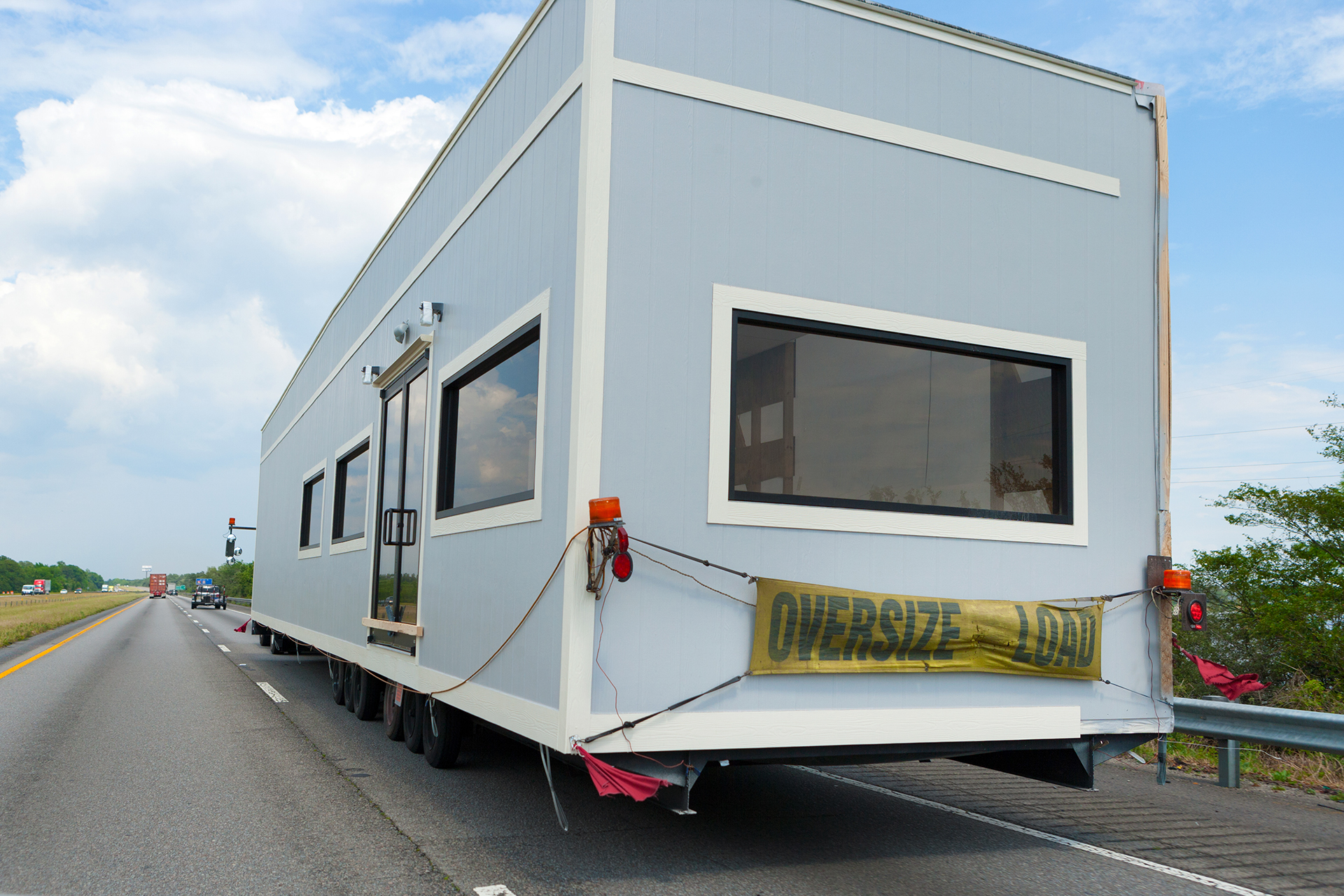While the packaging step in the manufacturing process can seem like a nuisance, it’s one of the most important. Without properly protecting newly manufactured modules, you’re practically inviting product damage, warranty claims, dissatisfied customers, or lost revenue.
Like the rest of your manufacturing process, this step requires the right planning and execution to ensure your products are delivered in pristine condition. Whether they’re traveling 100 or 1,000 miles, here are five preparation steps to follow for the best modular unit protection results.
STEP 1: PREPARING FOR YOUR SHIPPING COVER
This step is crucial to ensuring packaging effectiveness. Remove all excess debris and moisture by sweeping, vacuuming, or air-blowing all pockets and spaces of your unit before you begin packaging to prevent any debris from causing abrasion during transit.
Water buildup in or around the unit can cause metal to rust or form mold and mildew – especially if it’s in a hot or humid environment. Maintaining an inspection-ready module creates a gleaming first impression for your customers.
STEP 2: THE IMPORTANCE OF PADDING
During flatbed shipping, high-speed winds can cause your cover solution to snag and tear on sharp points. Use foam pieces, cardboard, or reinforcement tape to pad all corners and sharp edges before covering it.
Equally important is keeping the outer surfaces of your modular units as flush as possible. Bend all protruding elements to be within, or flush with, the frames of the unit to reduce tension on your covering solution. If they aren’t malleable, generously pad these areas with foam, cardboard, or tape, like the corners and edges.
STEP 3: SECURING AND SEALING
The last step before choosing a shipping cover is ensuring all loose inputs or fixtures (mirrors, doors, drawers, etc.) are secured, tied down, or stowed away so they don’t shift or move during transportation.
All entry points, doors, vents, window openings, etc. should be sealed with plastic sheeting, cardboard, or tape. This will act as an extra layer of protection, preventing dust, debris, and water from getting inside. It’s also good practice to install zipper access on your unit’s door opening. This will make inspections easier and faster and allow the sealing and resealing of the plastic if your unit is being stored before installation.
STEP 4: CHOOSING THE PERFECT COVER SOLUTION
There are certain details of your shipping process that should be considered when choosing between shrink wrap, crating, tarping, or using custom covers.
First, factor the price of your unit into your choice of packaging material. The more expensive your unit is, the more you’ll pay for warranty claims and repairs if damaged. For more expensive units, we always recommend higher-quality packaging like a custom cover to ensure protection against all types of damage.
Second, think about the potential risks of damage that come with your shipping style. With flatbed shipping, your unit will be exposed to more potential damage scenarios and should be handled with extra caution – better safe than sorry!
Next, consider how long your unit will be in transit. The farther your units travel, the higher the risk of damage on the road. It’s best to choose a packaging material that will be able to stand up to the length of the trip. Speaking of time factors, it’s also important to plan appropriately for any time the unit will spend in storage – especially outdoors.
STEP 5: MAKING SURE YOUR UNIT IS ROAD READY
Once your cover or wrap is installed, reinforce the stress points and rigging holes made in the cover with reinforcement tape. At the minimum, apply tape to the following areas:
- The base of the cover to ensure a sealed fit
- All corners and edge points
- Any protruding tension points
- Any seams
- Any rigging holes
Do one last walk around to inspect the covered module for anything that may have been missed. Now you’re ready to ship with the confidence that your unit will arrive to your customer in the pristine condition they want to see.
Packaging for modular units is often the last step in the manufacturing process and can be the step that gets rushed the most. It’s crucial to have a standardized packaging process that includes choosing the right material, so your units reach their destination factory-fresh, every time.
Whether you’re looking to completely revamp your packaging process, or just researching new techniques to become more efficient, we have the knowledge and resources you need.
For extra help making the right choices for shipping your module units, check out our custom-fit protective covers, or try our Cost-to-Package Estimator.
